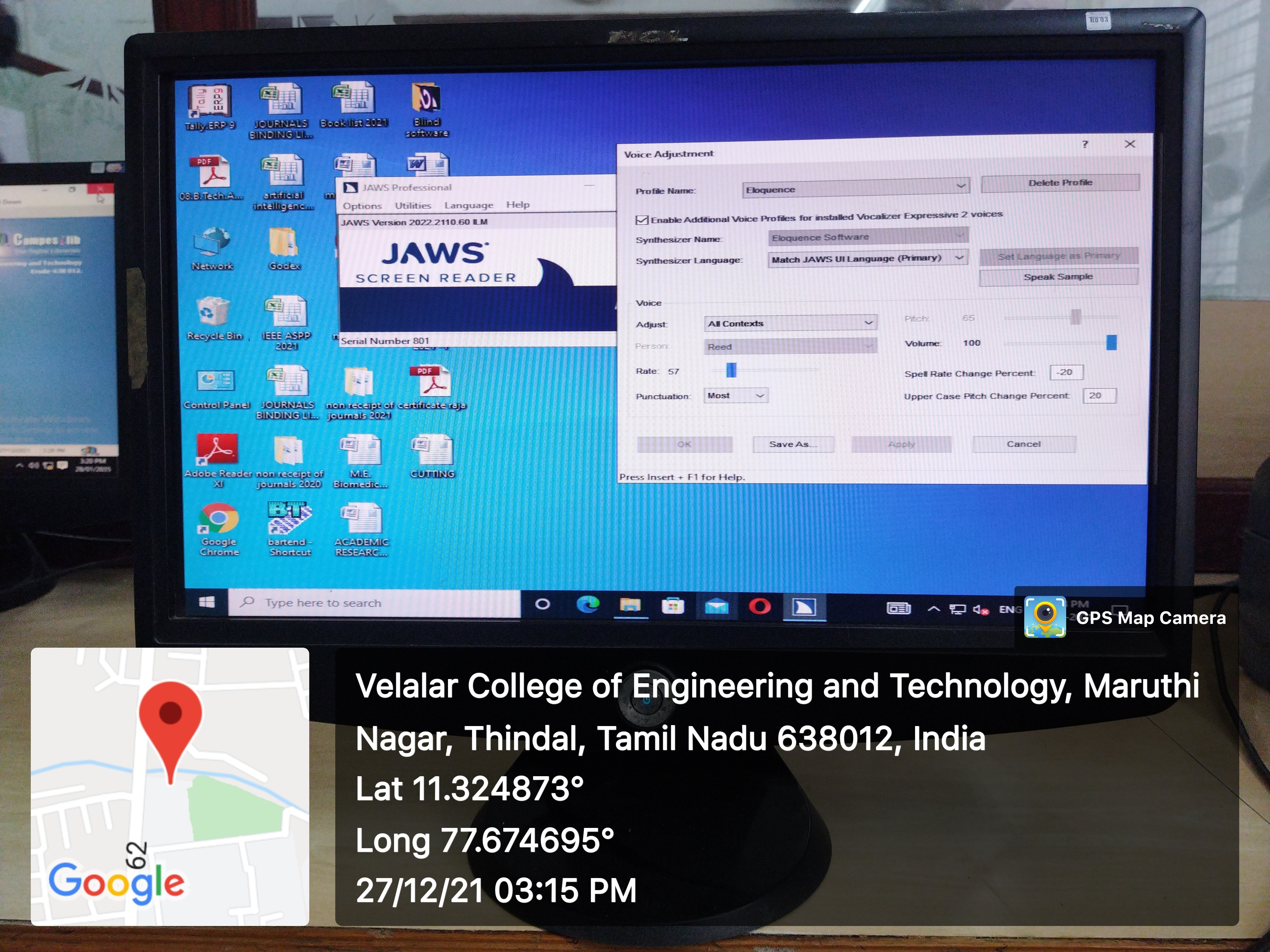NVDA (NonVisual Desktop Access) is a free “screen reader” which enables blindand vision impaired people to independently use the Windows Operating System. Itreads the text on the screen in a computerized voice. You can control what is read toyou by moving the cursor to the relevant area of text with a mouse or the arrows onyour keyboard.NVDA can also convert the text into braille if the computer user owns a device calleda “braille display”. The NVDA screen reader can be downloaded free of charge byanyone. We do this because we believe everyone; especially the world’s poorest blindpeople deserve access to computers and a way out of poverty.
The Central Library of VCET has Job Access WithSpeech (JAWS) Software for differently-abled persons. JAWS is a computer screen reader software for Microsoft Windows that allows blind and visually impaired persons to read the screen either with a text-to-speech output or by a refreshable Braille display. JAWS is produced by the Blind and Low Vision Group of Freedom Scientific.The JAWS Scripting Language allows the user to use programs without standard Windows controls.
JAWS allows all major functions of the Microsoft Windows operating system to be controlled with keyboard shortcuts and spoken feedback. These shortcuts are kept as consistent as possible throughout most programs, but the very high number of functions needed to fluidly use modern computer software effectively requires the end user to memorize many specific keystrokes. Virtually every aspect of JAWS can be customized by the user, including all keystrokes and factors such as reading speed, granularity used when reading punctuation, and hints. JAWS also includes a scripting language to automate tasks and make more complex modifications to the program's behavior.
The software includes a distinct mode designed specifically for web browsers, activated when a browser is in the foreground. When browsing web pages, JAWS first declares the title and number of links. Speech can be stopped with the control key, lines are navigated with the up/down arrow keys, and the tab key moves between links and controls. Specific letter keys on the keyboard can be pressed to navigate to the next or previous element of a specific type, such as text boxes or check boxes. JAWS can access headings in Word and PDF documents in a similar fashion.
Since JAWS has an interactive talking installation, the Visually Challenged can install JAWS easily & independently without sighted assistance.
JAWS provides a choice of different voices, which now also includes an Indian Accent Voice.
JAWS has built-in Basic Training Tutorials in DAISY format with text and audio instruction to help beginners to understand how to navigate the Windows environment with JAWS.
JAWS also outputs to refreshable Braille displays, delivering unmatched Braille support. Both contracted and un-contracted Braille is supported. This function has also enabled the deaf blind to learn and operate the computer independently.
JAWS makes Internet access very easy for the visually challenged with features like links lists, frames lists, forms mode, reading and navigating HTML tables, navigation quick keys for HTML and PDF documents, PlaceMarkers, Custom Page Summary, Custom Labels for Web page elements.
JAWS enables users to have their own personalized settings across all applications which can also be shared with others.
JAWS enables the visually challenged to browse through large documents easily with the use of this feature.

